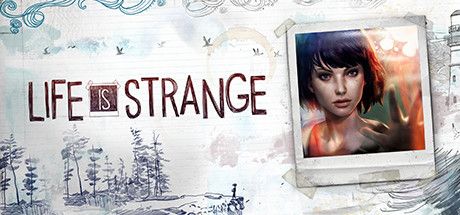- Format: Xbox One (version reviewed), PS4, PS3, 360, PC
- Unleashed: Out now
- Publisher: Square Enix
- Developer: Dontnod Entertainment
- Players: 1
- Site: http://lifeisstrange.com/agegate.php
- Game purchased by reviewer
WARNING! This review will contain spoilers for episodes 1-3. You should therefore play those first (or at least read our reviews) before continuing. Still here? Okay, cool; let’s get going.
The penultimate (you’ve probably noticed reviewers love using that word whenever they get the chance) episode has a lot of work to do. Not because the series has disappointed so far, quite the opposite; it’s been an incredible experience all the way, and this would be a really bad place to start wobbling. There are a lot of threads that really need to start being woven together too, though. In that respect, Dontnod do good here.
Let’s start off with the follow-up to last episode’s ending, though. You begin with Max in the alternate reality she’s created where Chloe’s dad is still alive; but Chloe herself has not only avoided the off-the-rails punk route, she’s now living her life in a wheelchair, paralysed from the neck down. “What else have I changed?” wondered Max at the end of episode 3, as she saw the beached whales on the way to Chloe’s house. Well – you don’t really get to find out. You don’t spend very long in this alternate reality, and you never leave the confines of the Price family home. Excellent use is made of the time you do have here though, with moral and emotional lines blurred with masterful strokes. It’s far removed from a simple case of ‘Chloe may be in a wheelchair, but she’d be happy to swap her mobility for her dad’s life’. Special mention must go to Ashly Burch who, while always putting in a phenomenal performance as Chloe, does an amazing job of playing a significantly different yet recognisable version of her usual character.
Speaking of acting, the general quality here is more variable than usual. The main players still give outstanding performances, but giving more time to minor characters has, unfortunately, only served to highlight how awkward their performances are in comparison. It’s nothing to ruin your enjoyment of the episode, but it is a shame.

This is where Max and Chloe find the – well, that really would be telling.
Episode 3 peeled back Nathan’s facade to start showing just how deep his dark side goes, and episode 4 takes this idea and runs with it – even though he doesn’t get much screen time in person. Dig around and you’ll also start to see the twisted relationship he has with his father, which hints at yet another thread to be yanked out in full in the following, final episode. In more general terms, this episode gives the appearance, if nothing else, of your previous choices having more of an effect on the world around you than ever. Did you save Kate? Did you befriend Victoria, or taunt her? Did you let Chloe have her gun? These elements and more have a noticeable effect on your experience to some extent.
It’s not all good news, sadly. There’s no repeat of the junkyard bottle hunt (no, we won’t forgive and forget), but there is – surprisingly, for the first time in the series – some actual adventure-game-style puzzle solving. In isolation this isn’t a bad thing at all, and rewards careful thinking and application of logic. Within the context of the series as a whole however it’s an irregular beat, unceremoniously interrupting the flow of the story previously controlled entirely by the player.
More concerning are certain shades of the storytelling. The conversation with Samuel is entirely optional; but if you have it (necessary for a hidden photo op), it plays the ‘mystical man-child’ angle a little too heavily for our liking. Also, Warren; enough already! We’ve gently brushed him off at every opportunity. If you want Max to show an interest then cool, but those of us who don’t want that to be our story shouldn’t still have romance opportunities thrust in our faces at this stage of the story.
What worries us the most – and admittedly, this mostly comes through optional conversations and e mails – is what could be interpreted as groundwork for a much stronger supernatural flavour to the final episode. Max’s powers and the impending tornado have thus far been used as an interesting backdrop for a very human story. If the emphasis is suddenly put on super rather than natural, player immersion and the story itself will suffer. But time will tell, no pun intended believe it or not.

Oops, did we forget to mention that this is the episode where you find out where, how, and why Rachel Amber disappeared?
We’re also sorry to report that technical issues forced us to restart a section twice, all the more frustrating considering that cutscenes and dialogue can not be skipped if the game doesn’t recognise you’ve already been through them. The game crashed on us once during the optional conversation with Samuel (we repeated the dialogue choices exactly the second time without issue), and later on – during what should have been a tense moment – Max somehow got her face stuck in a concrete wall. Ironically, this also seemed to stop her time rewind powers working properly, so we couldn’t even use them to correct a real-life mistake.
Don’t get us wrong; judged by storytelling in games in general, Life Is Strange yet again flattens almost all the competition. It’s made us tense for what might happen in the final instalment for all the right reasons – it’s just that it’s made us tense for a few of the wrong ones, too.









Comments